San Gregorio Reservoir
Yesterday I went with Gary and Alden Stradling and his family to hike to San Gregorio Reservoir. As is often the case when I’m with Alden, we had so much fun talking that I didn’t get a lot of photographs. Still:

The place was a madhouse. (A madhouse.) With few other recreational options, a lot of us had apparently decided to all socially distance here together.
The reservoir sits atop the San Pedro Mountains, which is really a kind of high plateau of gently rolling hills and parks (grassy mountain valleys).
The remarkably level surface of the plateau is at least 700 million years old, and was beveled off by the Varangian glaciation that produced the “Snowball Earth.” This glaciation turned almost the entire western United States into a level plain.
The rise of the Ancestral Rocky Mountains 350 million years ago pushed up a block of crust here that resisted erosion, shedding some sediments but subsiding nearly intact 50 million years later. There are remnants of rock beds of the Abo Formation atop the plateau that showed it was bare before then, but had subsided by Abo time, 300 million years ago.
The block was thrown up again perhaps 25 million years ago. That is the age of Abiquiu Formation chert beds atop the plateau that must have been laid down in low ground. The top of the block has again been eroded nearly clean, with just some remnants of Abo Formation and Abiquiu Formation to show it was once low ground. The red soil around San Gregario Reservoir is eroded Abo Formation filling a shallow valley in the surrounding Precambrian rock (which is San Pedro quartz monzonite, some 1.75 billion years old.)
I took the group on a hike to the top of Nacimiento Peak, which looked like it might have a knoll on top with a spectacular view based on Google Earth. Alas, the knoll we actually found, by the simple expedient of heading uphill until there was no more uphill, was more wooded than it looked on Google Maps. We did get some views throught the trees.
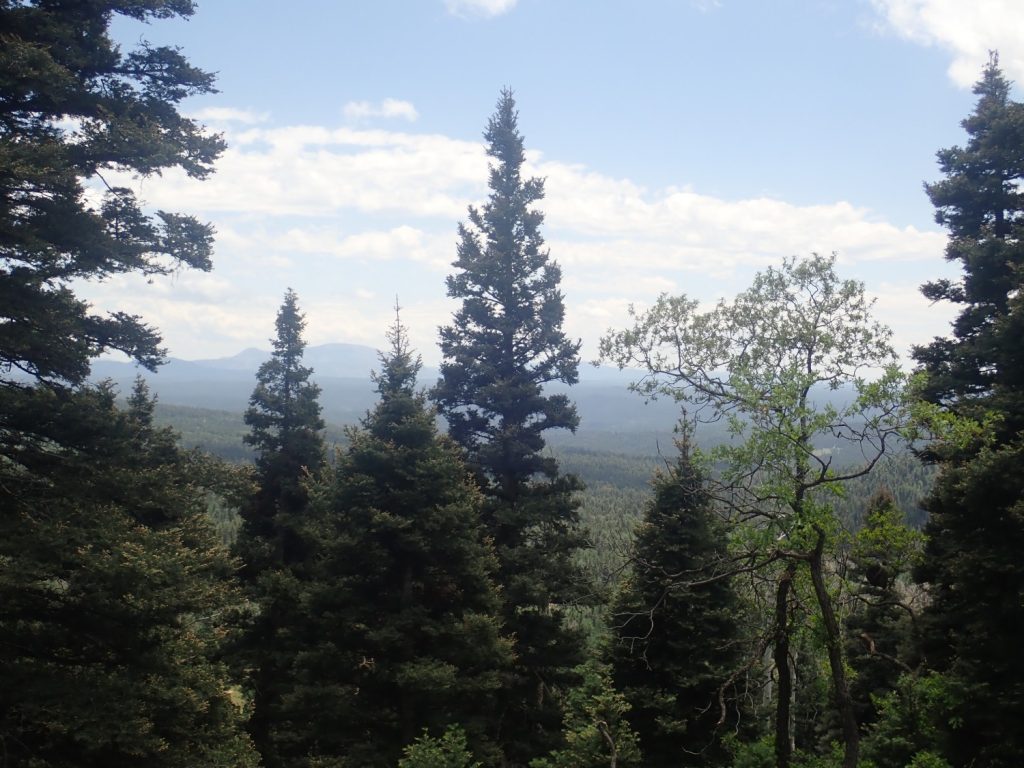
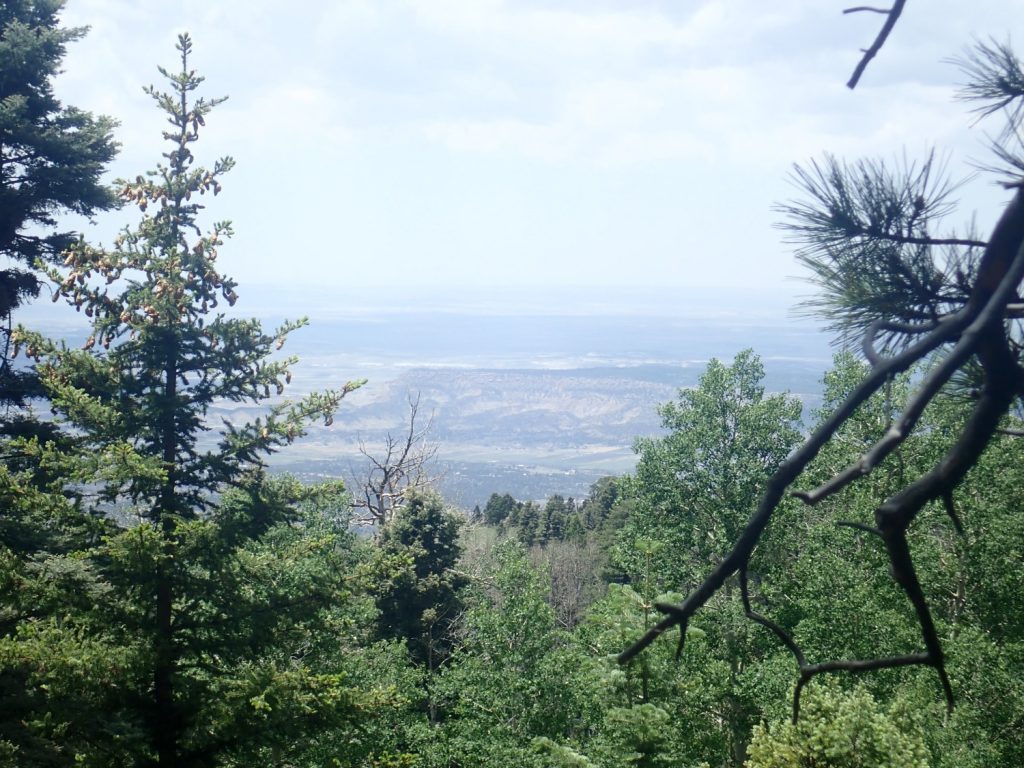
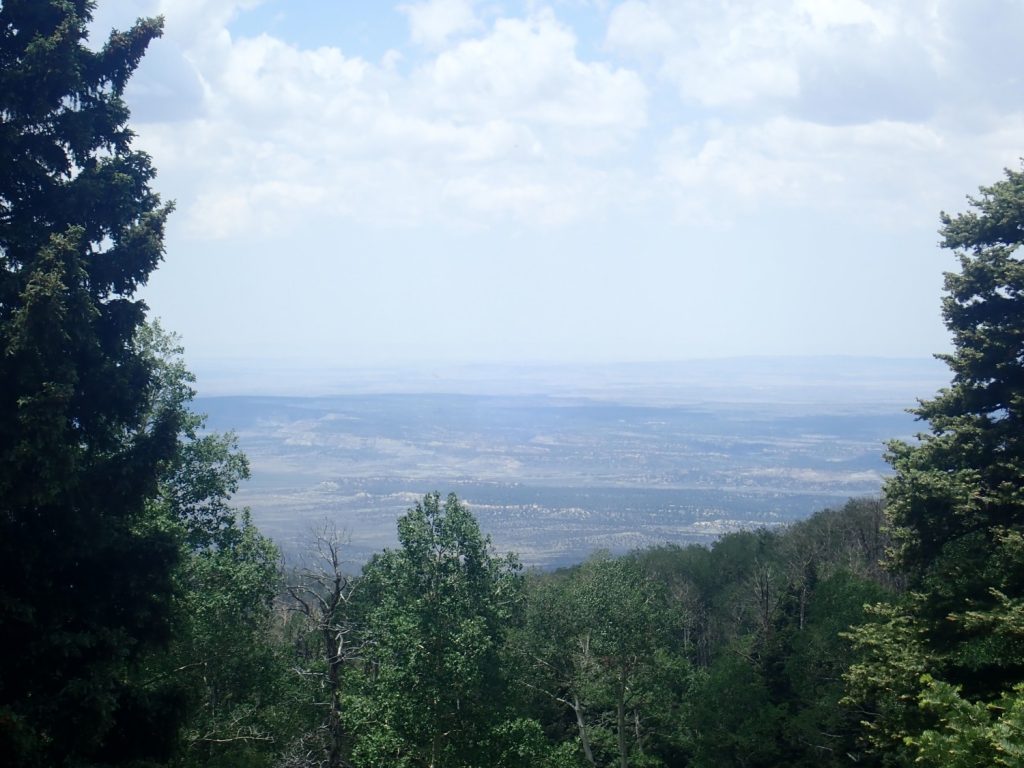
We split up going back down, Alden and family trying one route and Gary and I another. Gary and I came across a big patch of open red ground just about where Google Earth showed the big bare knoll; but it certainly wasn’t high ground. I suppose the terrain rendering is not entirely reliable on this scale.
Gary was trying to avoid having to cross tree fall, but in the end we had to cross quite a bit anyway, and it was roundabout. I was humming “Go To Sleep You Little Baby” by the time we found Alden. Who got the joke at once.
At least there were wildflowers.
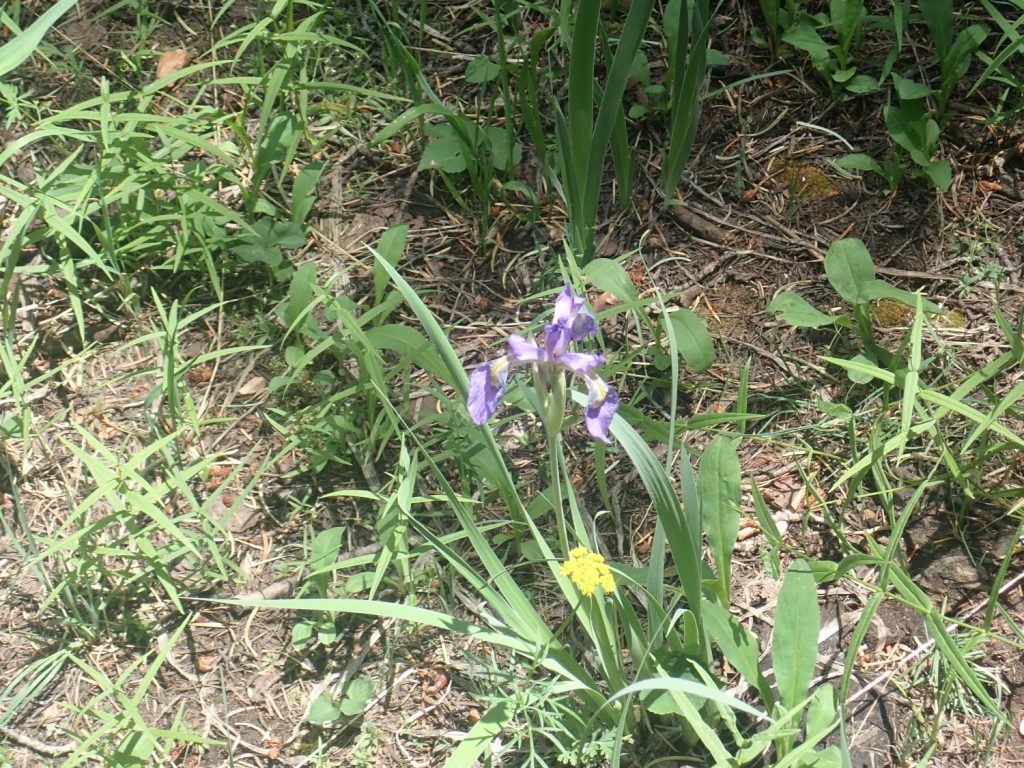
Alden’s wife, Dorothy, turns out to be a real water baby. Or nymph. (“Naiad” — Alden) Water features are definitely her thing, so I think this hike was a success.
Alden and family headed on home while Gary and I lingered for some local geology.
Shear zone in a San Pedro quartz monzonite outcrop. This is part of the Nacimiento Creek Shear Zone, which may date back more than 1.4 billion years.
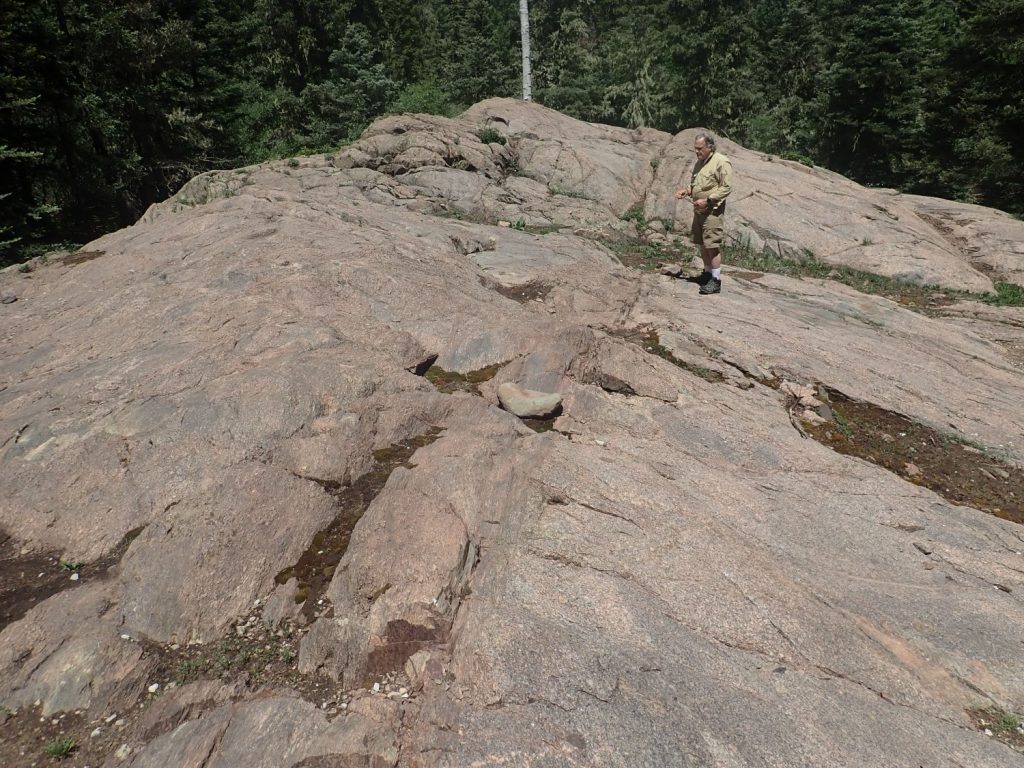
Mesaverde Group hogback just west of the mountain front.
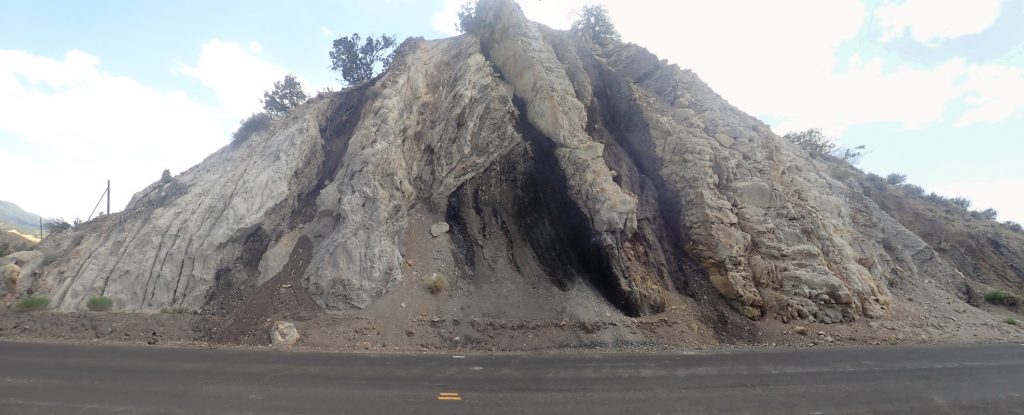
This is a set of resistant beds (sandstone and some carbon-rich shale) that normally lies on top of the very soft Mancos Shale and below the equally soft Lewis Shale. When the Nacimiento block was uplifted 25 million years ago, it was actually thrust over the beds to the west, and the Mesaverde beds here were bent almost vertical. The beds to the left (east) are the oldest.
And here is the exact trace of the Nacimiento thrust fault.
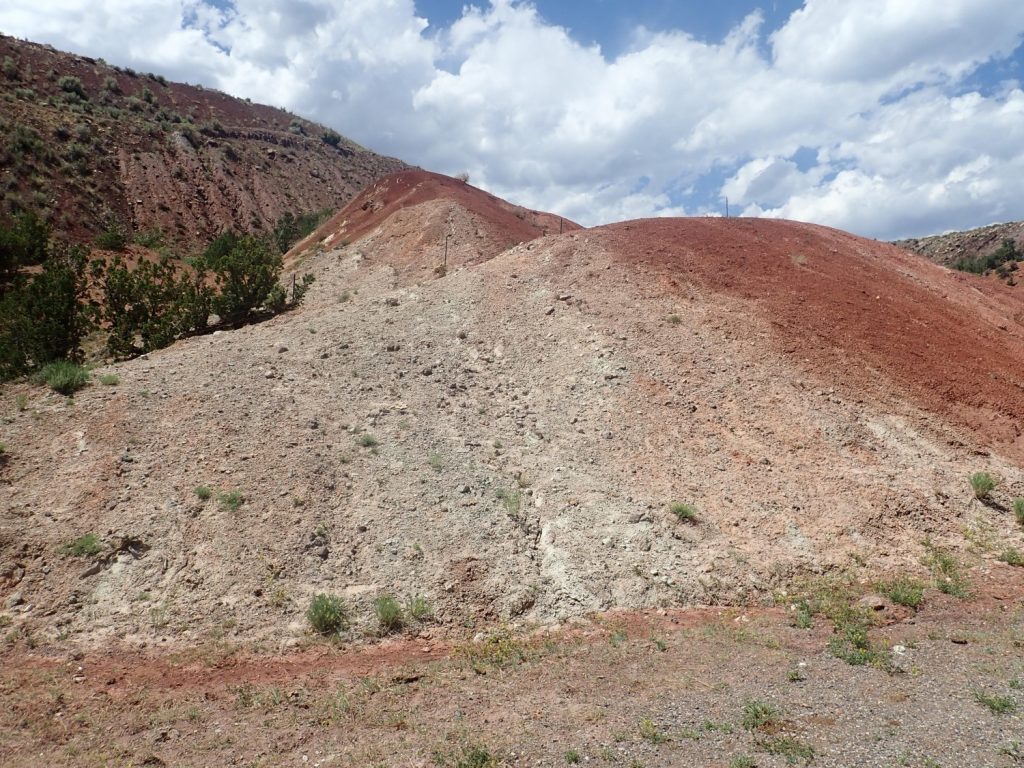
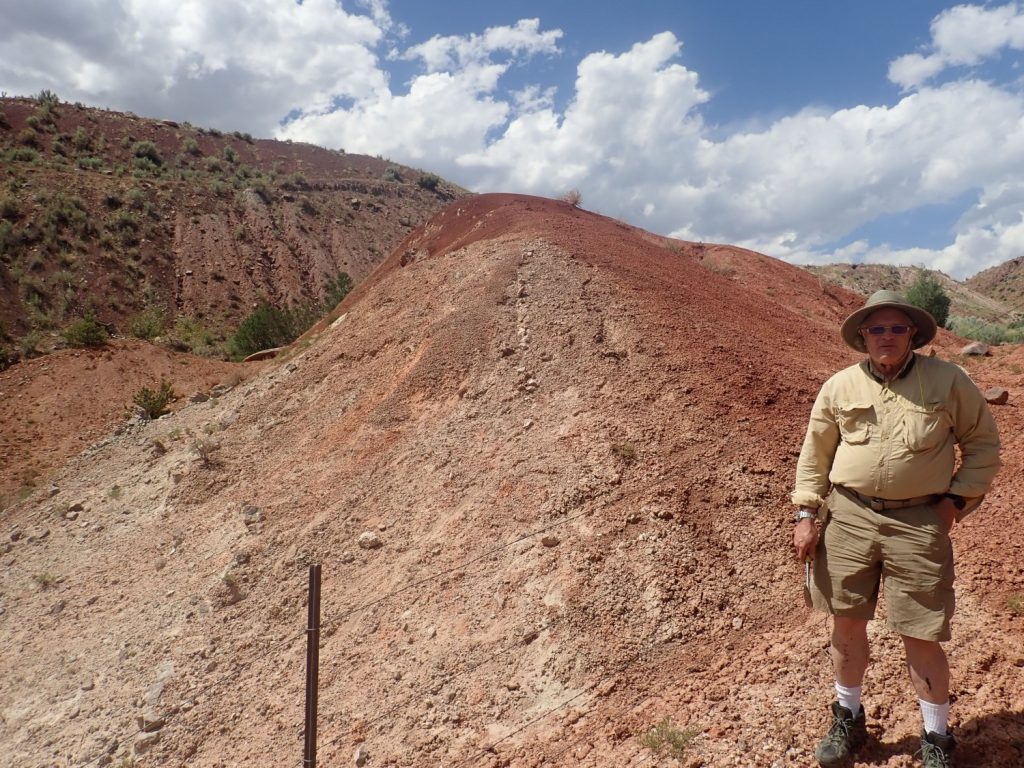
Here older Chinle Formation beds to the right have been thrust up over younger Entrada Sandstone beds to the left.
From here Gary and I head east to the Madera fossil beds. I want to stop along the way to show Gary a lamprophyre dike, but there is simply no safe place to park near it. We stop near the old quarry in the Madera limestone beds; this is not a great spot for fossils but I once found what looked like a seven-pointed crinoid stem section here, and wanted to see if there were any more. No luck on that.
We split up at that point. I had chores at home and Gary wanted to find some crinoid-rich rock slabs to have sawed and polished. There are better spots for that than this one and I left him to it.
